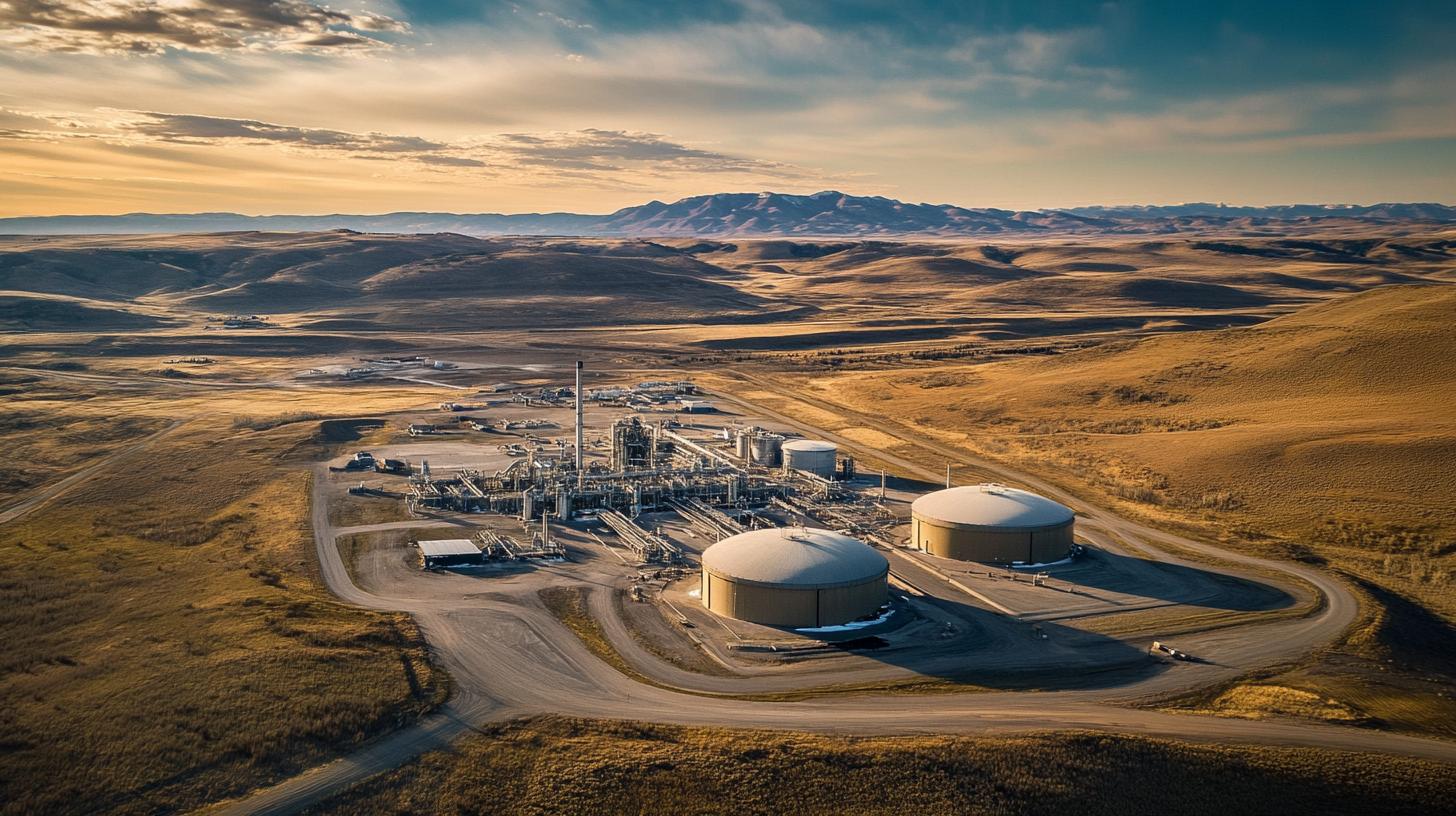In the face of global demand for sustainable energy, Wyoming, a state heavily reliant on the energy extraction sector, is exploring an unexpected avenue for reducing its carbon footprint—blue hydrogen. A new study by researchers from the University of Wyoming and local community colleges suggests that the state’s plentiful natural gas resources could be harnessed to produce this cleaner energy alternative.
Blue hydrogen is derived from natural gas using steam methane reforming (SMR), combined with carbon capture and storage technology. This process increases hydrogen output while limiting greenhouse gas emissions, offering a promising pathway for Wyoming’s transformation into a net-zero emissions economy.
Wyoming’s existing infrastructure is well-suited for this venture, as the state boasts approximately 17,800 gas-producing wells, reports the Petroleum Association of Wyoming. Legislative support, such as the state’s Low-Carbon Energy Standards, further complements the state’s ambitions in this sector. Additionally, federal tax incentives from the Inflation Reduction Act could enhance economic viability.
While green hydrogen—produced via renewable-powered electrolysis—remains a cleaner option, the current production costs make blue hydrogen a more practical choice for Wyoming at this time. The study’s authors nonetheless recognize the potential of both blue and green hydrogen to diversify Wyoming’s energy-based economy.
For Wyoming, venturing into hydrogen development could stimulate local economic growth, attract talent, and provide job opportunities in the energy sector. The paper highlights the economic incentives and workforce training opportunities tied to this low-carbon hydrogen industry, as emphasized by Eugene Holubnyak, Director of UW’s Hydrogen Energy Research Center. This shift could potentially secure Wyoming’s role in the evolving energy landscape.
Can Blue Hydrogen Make Wyoming a Leader in Clean Energy?
As Wyoming delves into the world of blue hydrogen, a lesser-known treasure hidden within its vast resources, intriguing discussions are emerging about the implications on both local and global scales. While the state’s initiative marks a significant step towards sustainability, what does it really mean for the people living there and for wider energy markets?
The Impact on Local Communities
Wyoming’s new hydrogen endeavors could be a game-changer for its residents. Transitioning to blue hydrogen could offer a lifeline to communities traditionally reliant on coal and natural gas industries, which have been declining. By leveraging its abundant natural gas reserves, Wyoming not only aims for a reduced carbon footprint but also seeks to prevent further job losses in fossil fuel industries.
This venture could spawn new employment opportunities in technology fields related to hydrogen production. As Eugene Holubnyak mentions, there is potential for workforce training that can equip locals with skills needed for future energy jobs. Communities may benefit economically from both direct jobs in hydrogen facilities and auxiliary sectors like transportation and construction.
Economic Opportunities and Risks
While there are opportunities, shifting to blue hydrogen is not without challenges. Federal tax incentives are a crucial factor in making blue hydrogen economically viable. The Inflation Reduction Act provides these financial cushions, but how sustainable are they in the long run? If these incentives are withdrawn or reduced, will Wyoming’s hydrogen plans still hold?
Moreover, should global markets pivot rapidly towards green hydrogen as production costs decrease, Wyoming’s investment in blue hydrogen might face future economic hurdles. These dynamics present both risks and the need for strategic foresight in planning the state’s energy economy.
Environmental Considerations: Is Blue Hydrogen the Best Bet?
Blue hydrogen is often touted as a key transitional fuel, keeping emissions relatively low compared to traditional fossil fuels. However, environmental advocates argue that the carbon capture and storage processes involved are not entirely carbon-neutral. How effective is carbon capture technology in reality? Is Wyoming putting too many eggs in the blue hydrogen basket, risking future compatibility with stricter environmental regulations?
While these debates continue, research suggests that to genuinely reduce emissions, coupling blue hydrogen development with increased renewable energy sources, such as wind and solar, is vital. This hybrid approach might safeguard Wyoming’s energy transition against potential stagnation.
Controversies and Future Prospects
Wyoming’s journey towards embracing hydrogen has not been without controversy. Some environmental groups criticize the state for not focusing exclusively on green hydrogen, seeing blue hydrogen as merely a patch rather than a solution. This sentiment raises questions about long-term commitments to true sustainability.
Is Wyoming taking the right path, or is this merely a stopgap measure that could deter investment in fully renewable tech? What lessons can be learned from Wyoming’s experience that could apply to other states or regions with similar resource profiles?
Ultimately, Wyoming’s experiment with blue hydrogen is watched closely as the state endeavors to pioneer a transitional energy strategy without abandoning its resource-rich identity.
For more on sustainable energy transitions, visit the U.S. Department of Energy and World Energy Council.














